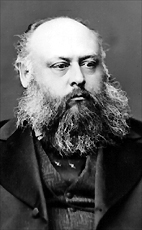
Lévis is a city in eastern Quebec, Canada, located on the south shore of the St. Lawrence River, opposite Quebec City. A ferry links Old Quebec with Old Lévis, and two bridges, the Quebec and the Pierre Laporte, connect western Lévis with Quebec City.

Lauzon is a former city in southern Quebec, Canada, located on the St. Lawrence River northeast of Lévis. Founded in 1867 as a village it became a town in 1910, Lauzon had a population of about 14,500 when it merged with Lévis in 1989. The then-amalgamated city had the name of Lévis-Lauzon for about one year in 1991, before merging again and changing its name for good to Lévis.
Bellechasse was a federal electoral district in Quebec, Canada, that was represented in the House of Commons of Canada from 1867 until the 1997 election, when it became Bellechasse—Etchemins—Montmagny—L'Islet. After redistribution prior to the 2004 election, that riding became Lévis—Bellechasse. Currently, the only riding which includes the name "Bellechasse" is Bellechasse—Les Etchemins—Lévis.
Lévis was a federal electoral district in Quebec, Canada, that was represented in the House of Commons of Canada from 1867 to 2004. It was created by the British North America Act, 1867. From 1998 to 2003, it was known as Lévis-et-Chutes-de-la-Chaudière. It was abolished in 2003 when it was redistributed into Lévis—Bellechasse and Lotbinière—Chutes-de-la-Chaudière ridings.

Henri Sévérin Béland, was a Canadian parliamentarian.

Christian Henry Pozer was a Canadian lawyer and politician.

Elzéar-Henri Juchereau Duchesnay was a seigneur, lawyer and political figure in Canada East. He also served in the Senate of Canada from 1867 until his death.

Saint-Henri is a municipality of 4,784 people, 20 km south of Lévis, in the Bellechasse Regional County Municipality. It is sometimes known as Saint-Henri-de-Lévis, and was historically known as Saint-Henri-de-Lauzon.

Route 218 is a two-lane east/west highway in Quebec, Canada. Its western terminus is at the junction of Route 132 in Saint-Pierre-les-Becquets and its eastern terminus is in Saint-Michel-de-Bellechasse at the junction of Route 281.

François Bourassa was a Quebec farmer and political figure. He represented Saint-Jean in the House of Commons of Canada as a Liberal member from 1867 to 1896.

Louise Beaudoin is a Canadian politician, who represented the electoral district of Rosemont in the National Assembly of Quebec until 2012, as a member of the Parti Québécois (PQ). She sat as an independent from June 6, 2011 to April 3, 2012. She is best known for her previous tenure as a Member of the National Assembly (MNA) of Chambly, from 1994 to 2003, when she occupied various ministerial positions.

Alexandre-René Chaussegros de Léry was a Quebec seigneur, lawyer and political figure. He was a Conservative member of the Senate of Canada for Lauzon division from 1871 to 1876 and also represented the same division in the Legislative Council of Quebec from 1867 to 1880.

Marc Picard is a politician in the province of Quebec, Canada. He currently represents the Chutes-de-la-Chaudière district at the National Assembly of Quebec as a member of the CAQ.

Émile Moreau was a Francophone Canadian politician of the Quebec Liberal Party. He was elected member of the Legislative Assembly of Quebec for Lac-Saint-Jean (1919–1931) and then Roberval (1931–1935), at the 15th, 16th and 18th Assemblies. He was also Legislative Councillor for Lauzon.
Jean Bouffard was a notary and political figure in Lower Canada. He represented Dorchester in the Legislative Assembly of Lower Canada from 1832 to 1838.

Louis-Napoléon LaRochelle was a manufacturer, railway contractor and political figure in Quebec. He represented Dorchester in the Legislative Assembly of Quebec from 1871 to 1878 and from 1886 to 1888 as a Conservative.
Pierre Boutin was a farmer and political figure in Quebec. He represented Bellechasse in the Legislative Assembly of Quebec from 1878 to 1881 as a Liberal.
Nicodème Audet was a merchant and political figure in Quebec. He represented Dorchester in the Legislative Assembly of Quebec from 1878 to 1886 as a Conservative. His name also appears as Nicodème Audet, dit Lapointe.
Nicolas Lefrançois was a land surveyor and political figure in Lower Canada. He represented Montmorency in the Legislative Assembly of Lower Canada from 1836 until the suspension of the constitution in 1837.
Joseph Éthier was a political figure in Lower Canada. He represented York in the Legislative Assembly of Lower Canada from 1796 to 1800. His surname also appears as Etié, Ethié and Héthier.

















